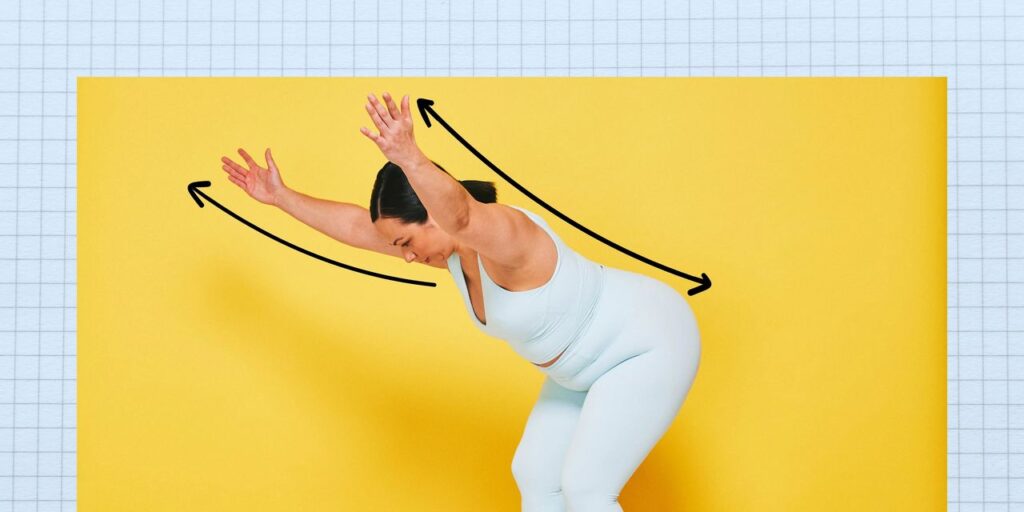For better posture, improved back health, and sturdier shoulders, start with the ABC’s…er, the I-Y-T’s. A common rehab move, the I-Y-T exercise is a beginner-friendly way to enhance your posture, nail down form for your bigger lifts, and bolster the overall functioning of your upper body.
The name is pretty darn descriptive: From a bent-over position, raise your arms straight up to form the I position. Then, bring them out to a 45 degree angle to create the Y. Lastly, hold them straight out to your sides to make the T. In between each letter, lower your arms down to your sides.
This move, which is often performed with just your bodyweight, is “one of my favorite exercises,” physical therapist Kellen Scantlebury, DPT, CSCS, founder of Fit Club NY, tells SELF. In fact, it should be a staple of more people’s routines, he says. For all the reasons why—and how to do the I-Y-T raise yourself—keep on reading.
What muscles does the I-Y-T exercise target?
This exercise homes in on the muscles that help control your shoulder blades and keep them in optimal positioning, Dr. Scantlebury says. Each letter works a slightly different area, though they all hit the middle and lower portions of your trapezius (traps), a diamond shaped muscle in your upper back that attaches to the shoulder blades, and also extends up into your neck. More specifically:
- I-raise: fires up your middle and lower traps.
- Y-raise: works your middle and lower traps, your rhomboids (another upper back muscle that attaches to the shoulder blades), and your rear deltoids (backs of your shoulders).
- T-raise: hits your middle and lower traps, rhomboids, and rear delts, though a little less intensely than the Y raise.
What are the benefits of I-Y-T raises?
The I-Y-T is a great accessory move to do to complement upper-body pushing and pulling exercises. That’s because it places your scapulae (a.k.a. shoulder blades) in the ideal positioning to complete these motions: It keeps them depressed (pulled down) and adducted (pulled in towards the center of your body), Dr. Scantlebury explains.
That’s important, since many people make the mistake—both in the gym and daily life—of shrugging their shoulders up to their ears, which overuses the upper traps and elevates the scapula. This places a ton of pressure on the shoulders, in particular on the rotator cuff muscles, which can get impinged (so, compressed or irritated) from that positioning.
Another common mistake people make is rounding their shoulders forward, which abducts the scapula (moves the shoulder blades apart from one another). That abduction overstretches and weakens the muscles that control the scapula, including the middle traps, lower traps, and rhomboids, which can lead to pain and increase injury risk in the upper back and shoulders. Plus, it’s just not ideal posture, since it has you hunching forward.


